It’s that time of year again. The poppy-sellers are out on the streets of Toronto, and soon, on the eleventh hour of the eleventh day of the eleventh month, we will stop what we are doing for a minute or two and think about those who have died in wars both recent and remote.
Sufferings and betrayals in Paris under the German Occupation in the Second World War have been recorded in many memoirs, novels, and movies, but the literature on the city in the First World War is more sparse. I decided to look through our collection of postcards and books to learn more.
I have two postcards showing Zeppelin damage. Compared with what was to come later, the destruction was fairly limited. The first postcard shows a damaged shopfront (it had sold secondhand goods) and some scattered cobblestones. On either side, children line up to get into the frame of the picture. “Crimes odieux des pirates boches,” says the caption. Clearly the point of the postcard is to stir up anti-German feeling.
The shop was on the rue Ménilmontant in the 20th arrondissement. Look at the number 91 in the top right-hand corner. Amazingly, the building exists to this day – you can still see the distinctive heart-shaped wrought-iron decorations in the windows on Google Street View.
The second shows more damage, a house cut in half. Someone has written in a location (rue de l’Elisée), but this is wrong. A press photograph of the same site on Gallica (the website of France’s National Library) provides additional information: the raid took place on January 29, 1916, at 34, rue du Borrégo, also in the 20th (which seems to have sustained most of the Zeppelin damage). The owner, one sous-brigadier Bidault, was killed.
 In all, the Zeppelin dropped 19 bombs that time, killing 54 people. A special funeral was held for them at Notre-Dame-de-la-Croix.
In all, the Zeppelin dropped 19 bombs that time, killing 54 people. A special funeral was held for them at Notre-Dame-de-la-Croix.
Much greater destruction took place towards the end of the war, when Germans used huge long-range cannons to shell the city from Picardy, 120 km (75 miles) away. Although the nickname “Big Bertha” was given to these cannons, in fact, there were two types. Big Berthas were howitzers, but the enormous “Paris Gun” was much larger and heavier with a longer range. This was the gun that fired a shell that fell came through one of the windows of St-Gervais during the Good Friday service of 29 March 1918, killing 88 people.
Even so, compared to cities in northern France, Paris emerged from the war relatively unscathed, at least in terms of its streets and buildings. Much more damage had been done in 1870-71, during the Siege and the Commune. Nor did Paris suffer under German occupation in the First World War, the fate of cities such as Lille.
Rather, citizens suffered from shortages and privations, from bereavements as sons and husbands were killed in trench warfare, from the unrelenting pressure of uncertainty as the war dragged on year after year. The city was filled with war wounded and refugees. Life went on in the cafés and shops, and the black market offered luxuries to those who could afford them, but for most people, it was a bleak period of survival and waiting. News was scarce.
I have two postcards from the Front. The first one was not sent to or from Paris, but it is typical of army correspondence on preprinted cards at that time. H. Vincent, réserviste, writes at some length, with atrocious spelling, to say he has no news. He was serving with the C.O.A. (Commis et Ouvriers militaires d’Administration) – the administrative corps that supported the army. If I’m reading his writing correctly, he was in the 5th Section of the COA, attached to the 55th Division de Réserve. He writes to Eugène Bailly, also in the C.O.A., 11th Section, stationed in Nantes. Nantes was a huge military centre during the war, with barracks and hospitals for both French and (later) American soldiers.
H. Vincent ends his message with “enfin patience et courage, bien à toi.” The postmark is obscured, but I know that it reads “Tresor et Postes,” the French military mark. It is impossible to make out the year. However, by comparing my card with images of similar cards online, I believe it was sent early in the war, because the printed part resembles that of other cards sent in 1914.
The second was sent in August 1918, as the war was finally turning in favour of the Allies. Gone are the flags and coloured printing – the card has been stripped down to the essentials. A soldier (last name Roche) informs Madame Roche (his wife? his mother?) that he was well (alive and not wounded). She lived at 8, rue Mathurin Régnier, in the 15th, in a house that is still there.
There is nothing more on the card (nothing further was allowed), but probably to his wife or mother, that news was enough and she was glad to receive it.
My last view of First World War Paris comes from the 2001 book by Margaret Macmillan on the Paris Peace Conferences (titled Peacemakers in the U.K. and Paris 1919 in Canada and the U.S.). She describes the city as it appeared to the delegations in January 1919:
Signs of the Great War that had just ended were everywhere: the refugees from the devastated regions in the north; the captured German cannon in the Place de la Concorde and the Champs-Elysées; the piles of rubble and boarded-up windows where German bombs had fallen. A gaping crater marked the Tuileries rose garden. Along the Grand Boulevards the ranks of chestnuts had gaps where trees had been cut for firewood. The great windows in the cathedral of Notre-Dame were missing their stained glass, stored for safety; in their place, pale yellow panes washed the interior with a tepid light. There were severe shortages of coal, milk, and bread. French society bore scars too. While the flags of victory fluttered from the lampposts and windows, limbless men and demobilized soldiers in worn army uniforms begged for change on street corners and almost every other woman wore mourning.
The city would not remain sad for long – the hectic gaiety of the 1920s was just around the corner – but for the exhausted populace, peace had not come too soon.
Text by Philippa Campsie.

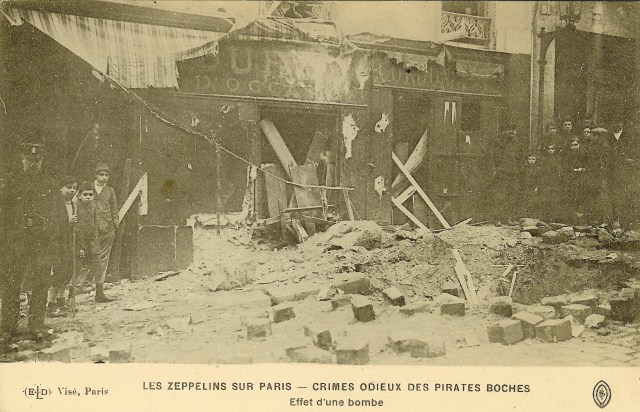


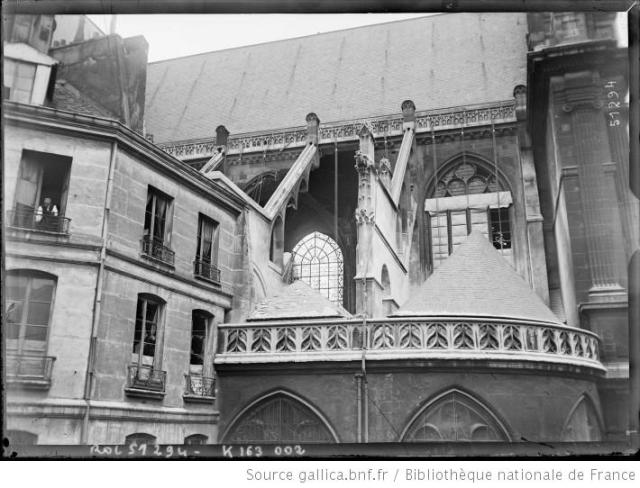








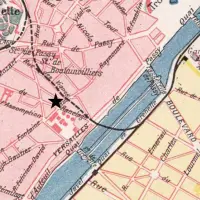
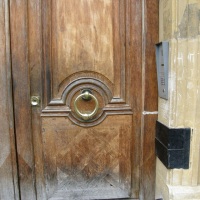
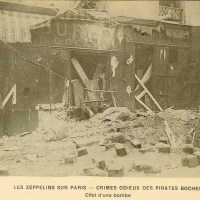
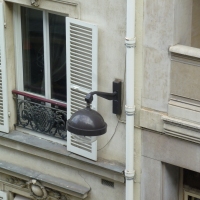


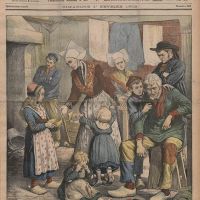









Bread was rationed for most of the war and a period afterwards. In the north there was real famine and people starved to death. A system of communal bakeries was set up to ensure what bread there was, was distributed fairly. I wrote a bit about it here.
The major railway stations served as muster points and thousands of men flocked to them when war broke out. It was mid-summer, and here in the countryside they were all convinced they would be back to drink the new wine at the end of the year. The patriotic owners of the chateau of Chenonceau offered the building as a convalescent hospital on the day war was declared. Later, huge camp hospitals would spring up along the Cher, serving not just as medical facilities, but as acclimatisation stages for incoming American troops. Although there was no fighting in the Touraine, hundreds of thousands of troops passed through here during WWI. Next year is the 100th anniversary of the outbreak of the war.
The cities of the Loire region played a big role, no question. Thank you for the comments and the link.
Parisian Fields
Thank you for your comments and the link. The subject of France in the First World War is vast, and there is a great deal to say. I have barely grazed the surface. The subject has also been heavily overshadowed by the Second World War. One day I would like to write a bit more about it. Your response suggests that I am not the only person interested in this topic.
How do you do it, Ms. Campsie? Only a few postcards, and a few pertinent lines of historical fact, but I feel as if it just happened. Very moving. It all conflates with today’s realities, and I see our young men and women from Iraq and Afghanistan leaning beside the limbless young men of 1919 on the Champs-Élysées.
I had never heard of the Good Friday cannon that killed so many at St.Gervais-St.Protais. What a shock that must have been, even in war time.
Finally, I much appreciated your humor re: H.Vincent, who “writes at some length…to say he has no news.” The past must have its ninnies, along with its heroes, I suppose!
I am so glad that you enjoy these stories. I love to pore over old postcards. I love to hold these historic documents in my hands and try to figure out the thoughts of those who sent them and those who received them. One day, I hope, I will have the time to write more about these shadows from the past.
The writers are not always eloquent, and yet, they were trying to make sense of a crazy situation. Under the same circumstances, I probably would have taken just as long to say just as little as H. Vincent. I wonder what happened to him. One day, perhaps, I will find out.
I have a couple of recent photos relating to WWI in Paris.Around La Madeleine church there are statues, the one of St Luke is headless, due to a German shell decapitating him on 30 May 1918 according to the inscription. On a building next to the MK2 cinema on Quai de la Seine there is a small plaque, Translation – At 7.20 am on 23 March 1918 the first shell from “Bertha” fell in front of this building.
That first pairing of images is so interesting! The building ultimately survived the ravages of war, but is scarred by graffiti. One might compare it to a sign of contemporary urban warfare.
I agree that compared to cities in northern France, Paris emerged from the war relatively unbombed. Much more damage had been done in 1870-71, during the terrible year and a half of the Franco Prussian War and siege. Particularly starvation.
In fact the older generation, still alive in 1914, would still have remembered the 1870-1 war clearly. So it wouldn’t have been difficult to stir up anti-German feeling in Paris…. it was still seething there from the last war.
You are right. The scars of the 1870-71 war would have been deep and lasting. I do not know which was worse — the humiliation of that war or the devastation of trench warfare in the First World War, which wiped out a generation of young men. It is hard to comprehend these conflicts today.
Philippa
Pingback: The Paris Blog: Paris, France Expat Tips & Resources »Blog Archive » A WWI Survivor
I just read a wonderful new book, The Last of the Doughboys by Richard Rubin – I recommend it highly.
Thank you for the recommendation. I have been reading about the Normandy invasions of 1944 and marvelling at the courage and endurance of the troops who went over there and prevailed despite overwhelming odds. We owe them so much.
Philippa
Thank you for these most interesting blogs.
Pingback: ‘Crimes Odieux’ – How Paris Fared in WWl | FrenchNewsOnline
Pingback: ‘Crimes Odieux’ – How Paris Fared in WWl | france news
Pingback: âCrimes Odieuxâ â How Paris Fared in WWl | france news
I am researching the death of my Great Grandmother (MaryJane Kennedy) who “died on the night of August, 19, 1917 in a British Hospital in Paris, France during a bombardment, in WWI”. I realize the difficulty of my question: Like throwing ‘spaghetti to the wall to see if it sticks!’ I’ve seen the lengthy lists of English Hospitals that grew in Paris because of the war wounded. Don’t know what to do w this list! My Great Grandmother lived in Paris, France. Her son fought in the War but I have a postcard in french talking about my Great Grandfather losing his leg to an illness. Perhaps she was visiting him. Perhaps she was volunteering. She was 55 years old at the time of her death. Any research tips would be most appreciated.
My first instinct was to go to Gallica (http://gallica.bnf.fr/?lang=EN), click on “Periodicals” go to “Les principaux quotidiens” and check out a few papers from August 20 and 21, 1917. There was no specific mention of a bombardment of Paris on the night of the 19th, let alone a strike on a hospital. There are mentions of strikes on British hospitals, but they were closer to the front lines. But then, of course, the information you have does not necessarily mean that she died because of a bombardment. Paris was being bombarded at the time, true, but she might have died of something else on the day in question, which would mean she was a patient in the hospital. So it might not be a military hospital. It might well be the Hertford British Hospital, probably the best-known of the British Hospitals in the city (http://www.british-hospital.org/index.php/en/about-the-hbhc-3/a-brief-history).
If you can read French, I suggest you try searching the papers available online through Gallica in case I missed something (I just took a quick look and did a search for “bombardement” and “hopital”). If you want to send me a bit more information about your great-grandmother, I can have another try. You don’t need to post it here, you can write to me at parisianfields@gmail.com
Good luck,
Philippa
All these months later and I re-visit (by accident) your site having totally forgotten about this note and not getting notice of a reply! So now I must thank you so much for your reply and I will get in touch post haste! Can’t wait to share my postcards w you of my family in Paris.
Hi my grandfather Victor Dufour was in the AEF American Expeditionary Force. He was in the 33rd US Army Corp of Engineers. He wrote a diary of his time in France during WW1 and as it turns out, having survived being struck by a German submarine en-route to France when his ship the USS Covington was sunk. His role was to take heavy guns to the front at Verdun and he fought there. He, became involved in the building of one of the new hospitals at Reignac. In his diary he talks of visiting Paris before being sent to the front, and to him it must have been a wonderful site for his description is almost as one of a tourist as he describes the Eiffel Tower, Champs Elysee etc. However he goes onto describe his ‘tour’ of the front line. As US servicemen were provided with a diary in which to record their experiences no doubt they would now prove extremely helpful in building up a picture of France during WW1. When I visited Arras and region two years ago I was struck though how the French seem a little tired of their country being perceived as a perpetual memorial ground. I believe many of them want to move on. On guide told me how they are considering replanting trees in former battlefield areas to reflect what the area was like before the ravages of war – of course the roots of those trees will find many fallen men.
Pingback: Trespassing at Port-Royal | Parisian Fields